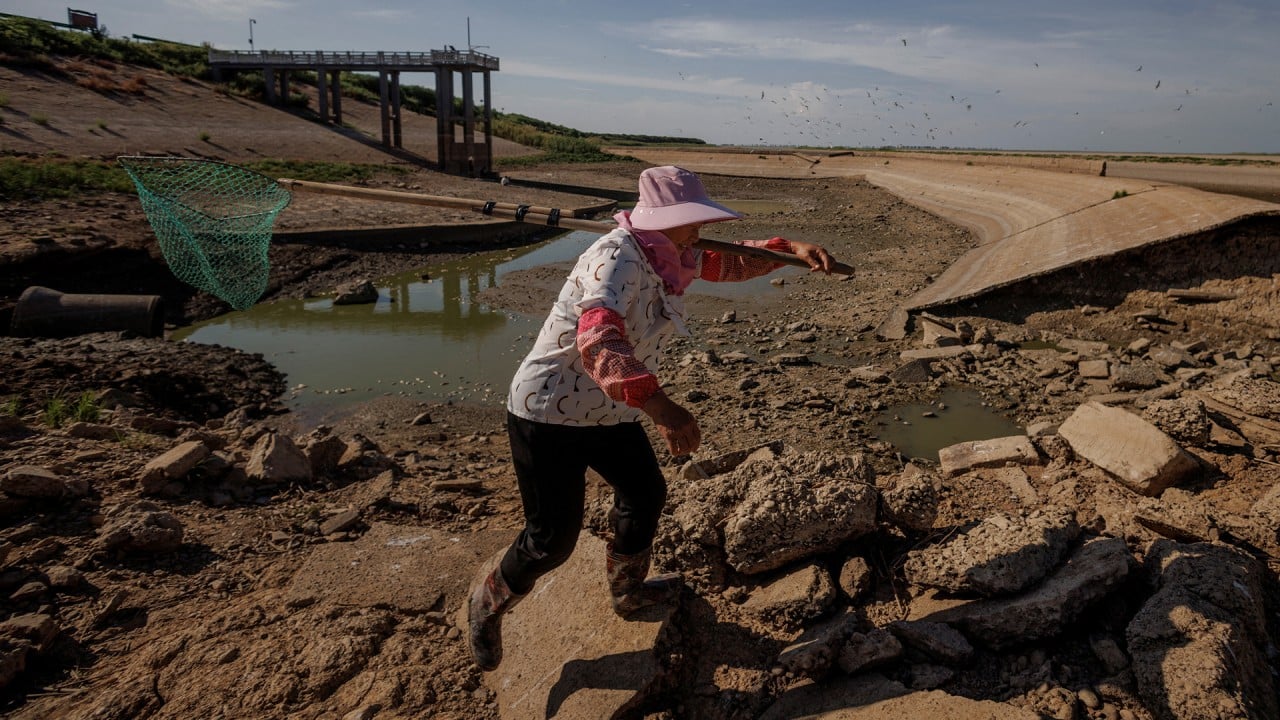
China’s Yangtze River, biggest freshwater lakes Poyang and Dongting at risk as fishing, sand mining bans flouted: report
- Central inspection report says pollution and illegal activity causing serious damage to the two lakes connecting to the Yangtze, Asia’s longest river
- Departments concerned admonished for not fully understanding the importance of restoring the ecological environment of the waterway
In a report issued earlier this month, the Central Supervision Office of Ecological and Environmental Protection said that combination of pollution and illegal activity was causing serious damage to the Poyang and Dongting lakes, which connect to the Yangtze.
However, according to the report from the centre’s inspection groups, rules against low dykes in Poyang Lake were not enforced, “fishing bans in key waters and aquatic life protection are not fully implemented, and the problem of agricultural pollution is prominent”.
Low dykes built to retain water had affected water quality in the lake and obstructed connectivity for river and lake systems, an inspection team found during an undercover operation in April. The local government then carried out its own investigation, only to find 44 illegal dykes still standing.
The county of Duchang, for instance, had wide swathes of illegal lowland enclosures in the Nanji Wetland National Nature Reserve that had yet to be “thoroughly cleared and rectified”, the report said.
Further, excessive use of fertilisers and pesticides in the lake’s catchment area has led to high phosphorus concentrations in the water – so much so that it no longer meets quality standards.
“Relevant departments … do not fully understand the importance of ‘placing the restoration of the ecological environment of the Yangtze River in an overwhelming position’,” the ecological report said.
“They do not pay enough attention to the construction of ecological civilisation, and there is a lack of supervision and ineffective work. Insufficient efforts to overcome difficulties have led to long-term problems related to the protection and restoration of Poyang Lake,” it added, referring to the concept of social transformation that prioritises the well-being of both human and non-human life.
For Dongting Lake, which is in central Hunan province and second in size to Poyang, the top threat was illegal sand mining that had hollowed out the beaches, and a return of illegal tree-planting that had destroyed the local ecology, the central report said.
An undercover mission by an inspection team earlier this month revealed that illegal sand mining was rampant in the Lishui estuary wetland reserve in Changde, involving an area of more than 48,000 hectares (119,000 acres), with nearly 20 million tonnes of sand removed. Quarrying and sand excavation are prohibited in nature reserves.
The team also found that more than 800 hectares, or nearly one-fourth, of Mengjiangan beach in the estuary area had been hollowed out by construction companies, seriously damaging the natural landscape and ecological balance of the wetlands.
In the 1980s, the area was planted with the European and American black poplars for the paper industry. This was banned after an inspection report in 2017 said the trees could speed up the drying of river beach wetlands.
However, though the trees were subsequently relocated, the ecological restoration work had not been effectively implemented, the report said.
According to Shanghai-based media outlet The Paper, there have even been illegal planting of other trees used in papermaking, such as maple and willow, in some areas along the lake.
The natural shorelines of the Yangtze and several of its major tributaries had also been severely encroached upon, especially by “excess occupation and unauthorised construction”, the central report said. Some docks exceeded the planned area and had been built without proper permits, it added.
For instance, the Jinqiao dock was found to occupy about 560 metres (1,837 feet) of the natural river bank, despite being allocated only 200 metres in the planning document. This over-occupation was not an isolated case but a common issue in Yunyang and Fengjie counties in the sprawling city of Chongqing, the inspectors said.
Industrial and domestic waste were also found to have seriously polluted the river and lake systems. In Yunyang county, the lack of proper pollution prevention measures in some docks meant industrial and domestic waste water was directly discharged into the Xiao River, a major tributary of the Yangtze.
The Meixi River, another important tributary, was threatened by two other docks storing coal and sand without proper sealing and water spraying systems in place.
The report highlighted how existing regulations and orders to rectify illegal dock construction had failed to effectively address the problem in full.
In response, government departments in multiple cities and counties cited in the report have expressed their commitment to rectifying the issues.


